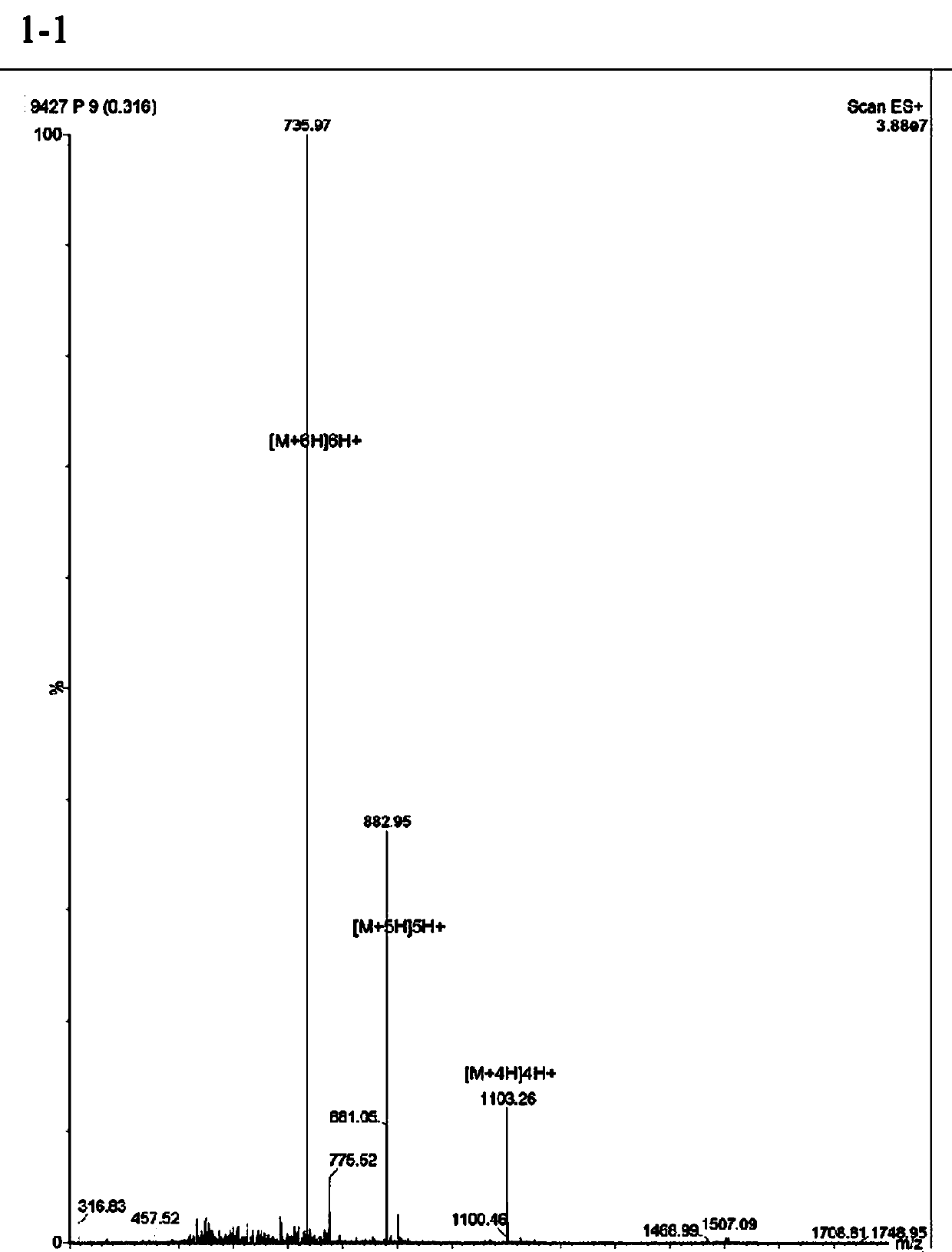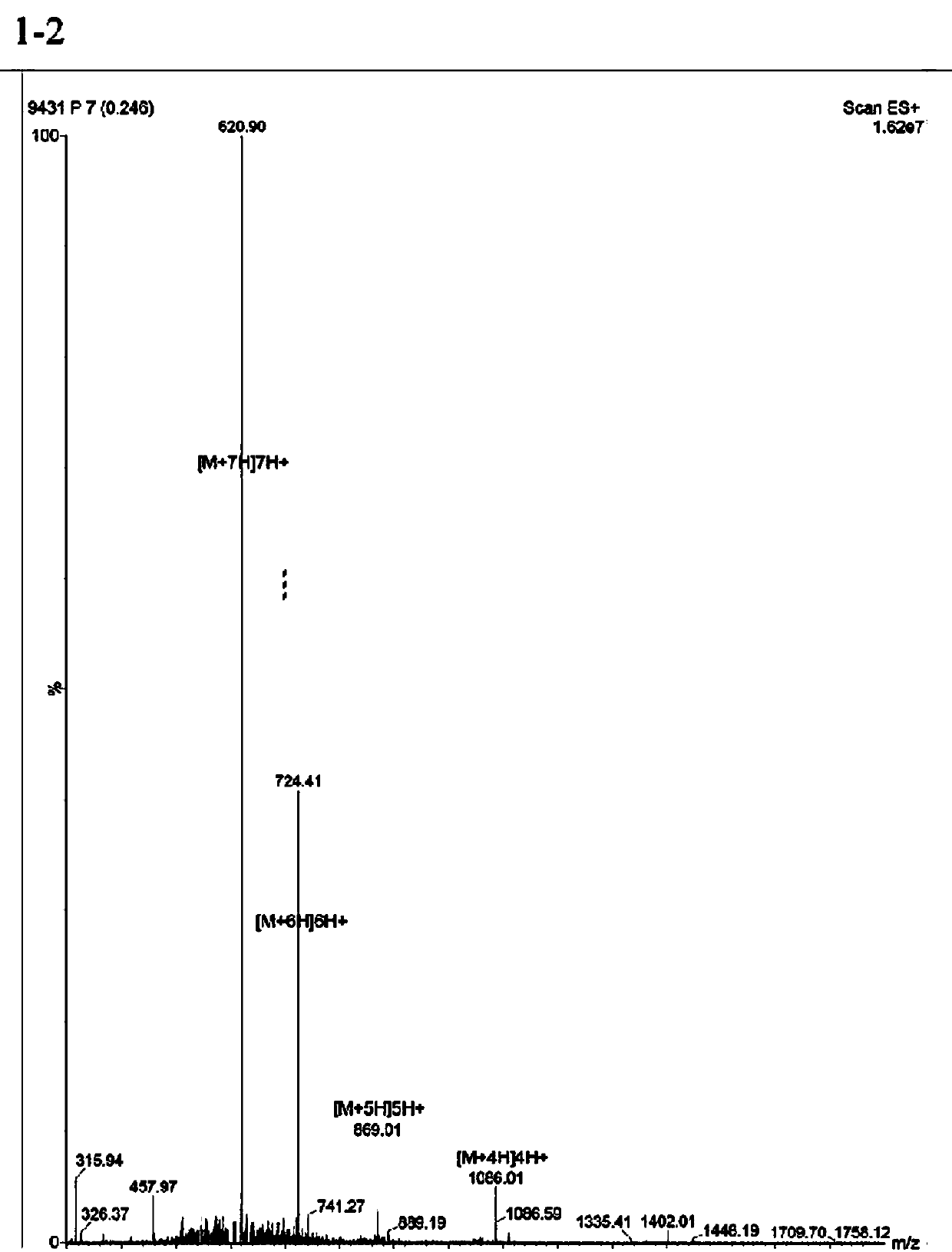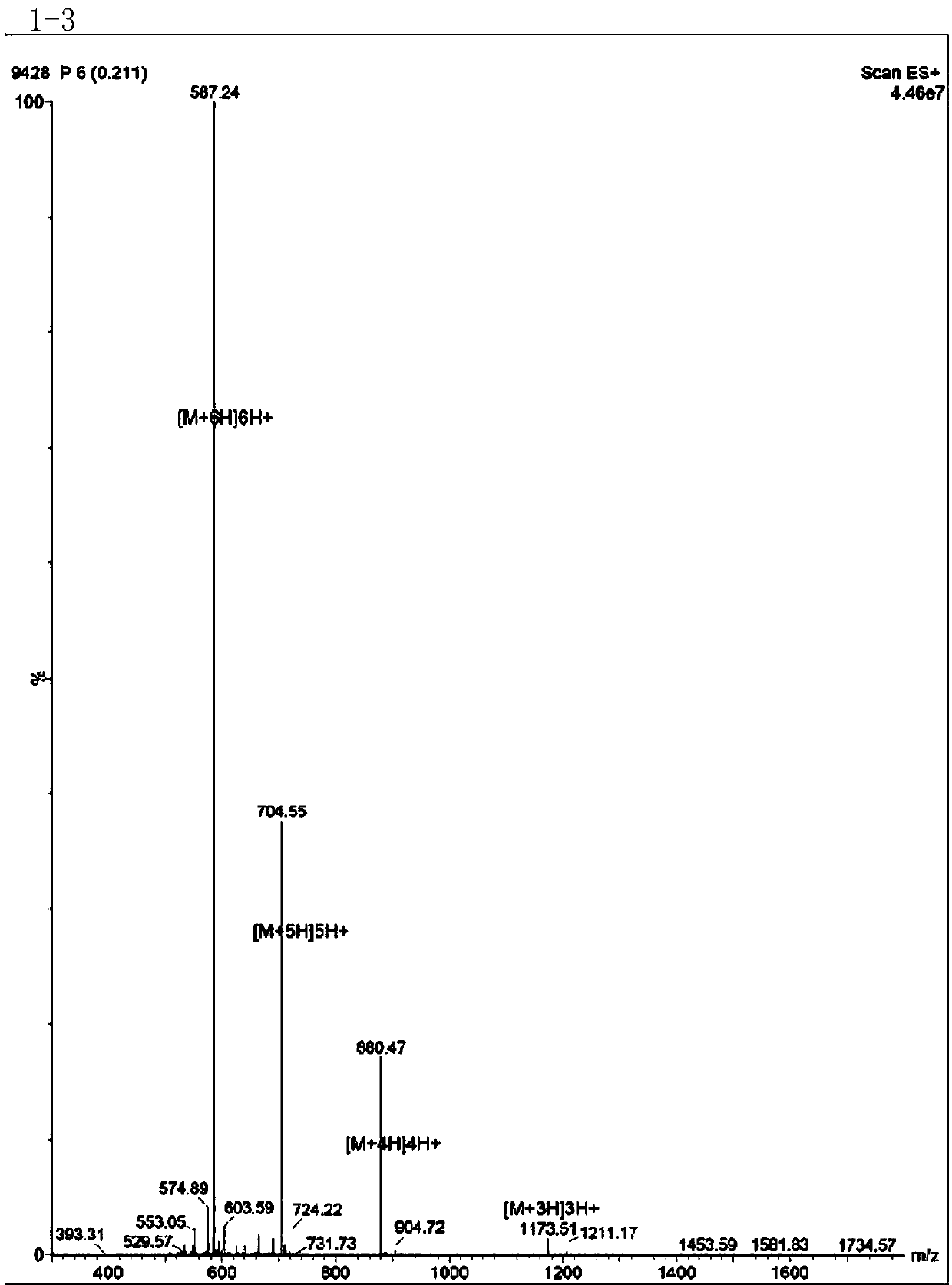Anti-tumor polypeptide Sur-X targeting to survivin-XIAP complex and application
A sur-x, anti-tumor technology, applied in the compound field of -XIAP, can solve the problems of increased risk of tumor recurrence and increased expression of XIAP, and achieve the effect of convenient clinical application
- Summary
- Abstract
- Description
- Claims
- Application Information
AI Technical Summary
Problems solved by technology
Method used
Image
Examples
Embodiment 1
[0033] Synthesis, purification and molecular weight determination of embodiment 1 polypeptide S
[0034] The anti-tumor polypeptide S of the present invention is obtained according to the specific amino acid sequence of survivin combined with XIAP reported in the previous literature, and the TAT transmembrane sequence is added to the amino terminal, and its final sequence is shown in SEQ ID No:1. A peptide segment that is not expressed in human cells is selected as a control for verifying that the polypeptide S of the present invention has a specific anti-tumor effect, which is denoted as polypeptide Con, and its final sequence is shown in SEQ ID No:2. Polypeptide NS is obtained by shortening polypeptide S, including two-thirds of the amino-terminal residues of S. The final sequence of NS is found in SEQ ID No:3. Polypeptides S, Con and NS were all synthesized by Fmoc solid-phase peptide synthesis method, which is briefly described as follows: according to the peptide sequenc...
Embodiment 2
[0037] Example 2 Observation under a confocal microscope that polypeptides can enter cells
[0038] Human colorectal cancer cells HCT116 and RKO were treated with Hoechst33342 at a ratio of 1:1000 and FITC-labeled polypeptide S and Con at a concentration of 10 μM for 1 h, and the entry of the polypeptide into the cells was observed under a confocal microscope.
[0039] image 3 Shown is the observation under the confocal microscope that both polypeptide S and Con can quickly enter the cell, indicating that polypeptide S has good membrane permeability.
Embodiment 3
[0040] Example 3 MTT detects the effect of S on the viability of human colorectal cancer cell lines HCT116 and RKO, human gastric cancer cell lines MGC-803 and MKN45, and human normal cell line SV5
[0041] Collect the cells in the logarithmic growth phase, count the cells and adjust the cell concentration, and inoculate 4000 cells / well in a 96-well culture plate; set the experimental group (S) and negative control group (Con), and set the concentration gradient for each group: 0, 2.5 μM, 5 μM, 10 μM, 15 μM, 20 μM, set 3 replicate wells for each concentration; after the cells adhered, give corresponding treatment, and incubate for 6h and 24h respectively; add 20μL MTT (5g / L) to each well, and incubate at 37°C After 4 hours, the supernatant was discarded, 200 μL dimethyl sulfoxide (DMSO) was added to each well, and the absorbance (OD) value at a wavelength of 570 nm was measured with a microplate reader; the relative cell viability at different concentrations was calculated; rep...
PUM
 Login to View More
Login to View More Abstract
Description
Claims
Application Information
 Login to View More
Login to View More - R&D
- Intellectual Property
- Life Sciences
- Materials
- Tech Scout
- Unparalleled Data Quality
- Higher Quality Content
- 60% Fewer Hallucinations
Browse by: Latest US Patents, China's latest patents, Technical Efficacy Thesaurus, Application Domain, Technology Topic, Popular Technical Reports.
© 2025 PatSnap. All rights reserved.Legal|Privacy policy|Modern Slavery Act Transparency Statement|Sitemap|About US| Contact US: help@patsnap.com



